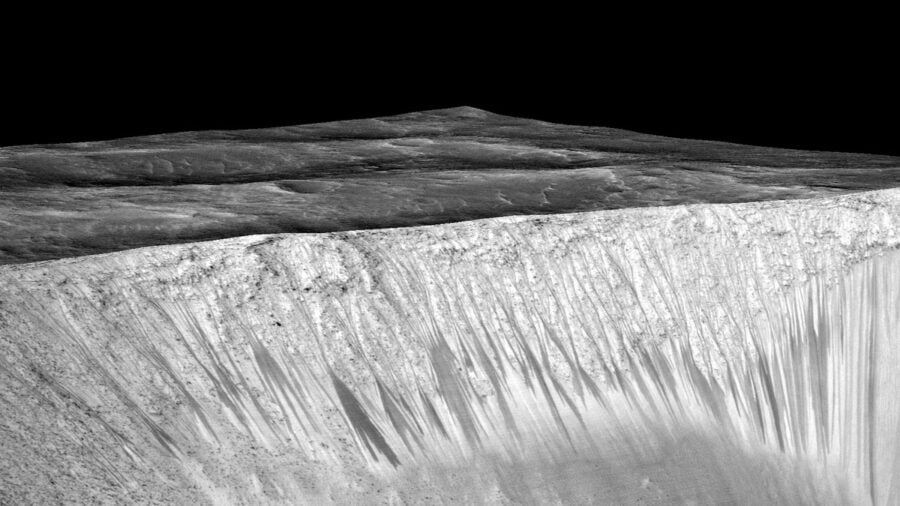Scientists have proposed a new way to optimize the search for life on Mars by training artificial intelligence to identify places most likely to contain “biosignatures” (signs of life).
A new deep learning system was trained to find biosignatures in the harsh conditions of Chile’s Atacama Desert, which is the driest desert on Earth and the place with the highest solar radiation exposure on our planet, creating conditions that approximate to Martian ones, as far as possible on Earth.
The AI tool was able to increase the probability of detecting biosignatures in this extreme environment to 87.5%, making it about nine times more efficient than randomly searching for signs of life.
About four billion years ago, Mars was warmer, wetter and potentially habitable. Orbiters and rovers have discovered many regions on the planet that were created by water, a key ingredient for life, opening up the prospect of finding remnants of what may once have been habitats for Martian microbes. For example, NASA’s Perseverance rover is currently exploring Jezero Crater, a former Martian lake that was filled with water.
While we have a rough idea of where to look for remnants of microbial life on Mars, narrowing down the search to the scale of tiny habitats is a much more difficult task. To address this problem, scientists led by Kimberley Warren-Rhodes, an astrobiologist at the nonprofit SETI Institute, developed “an adaptable framework that couples statistical ecology with deep learning to recognize and predict biosignature patterns,” according to the new study, published in the journal Nature Astronomy.
In their new work, the researchers aimed to train a deep learning system to predict the presence of biosignatures in Chile’s Salar de Pajonales, a mountain lake located at an altitude of 3,500 meters on the edge of the Atacama Desert.
Although no environment on Earth is as extreme as Mars, the Salar de Pajonales “exhibits features from both physical and biological processes highly relevant to biosignature search on Mars”.
Warren-Rhodes and her colleagues used data from aerial and ground observations to map the distribution of hardy photosynthetic microorganisms that live in this complex habitat. The team then trained neural networks to predict the likelihood of biosignatures occurring using a range of geological parameters such as salinity, rock type and access to light.
The deep learning approach was able to predict the probability of detecting biosignatures between 56.9 and 87.5%, making it a “a powerful tool to expedite the search and detection of biosignatures in terrestrial analogues,” says the study. The researchers found that the biosignatures are particularly concentrated in and around alabaster, a type of rock that holds water for long periods of time, a discovery that could be useful for geological studies on other planets.





Loading comments …